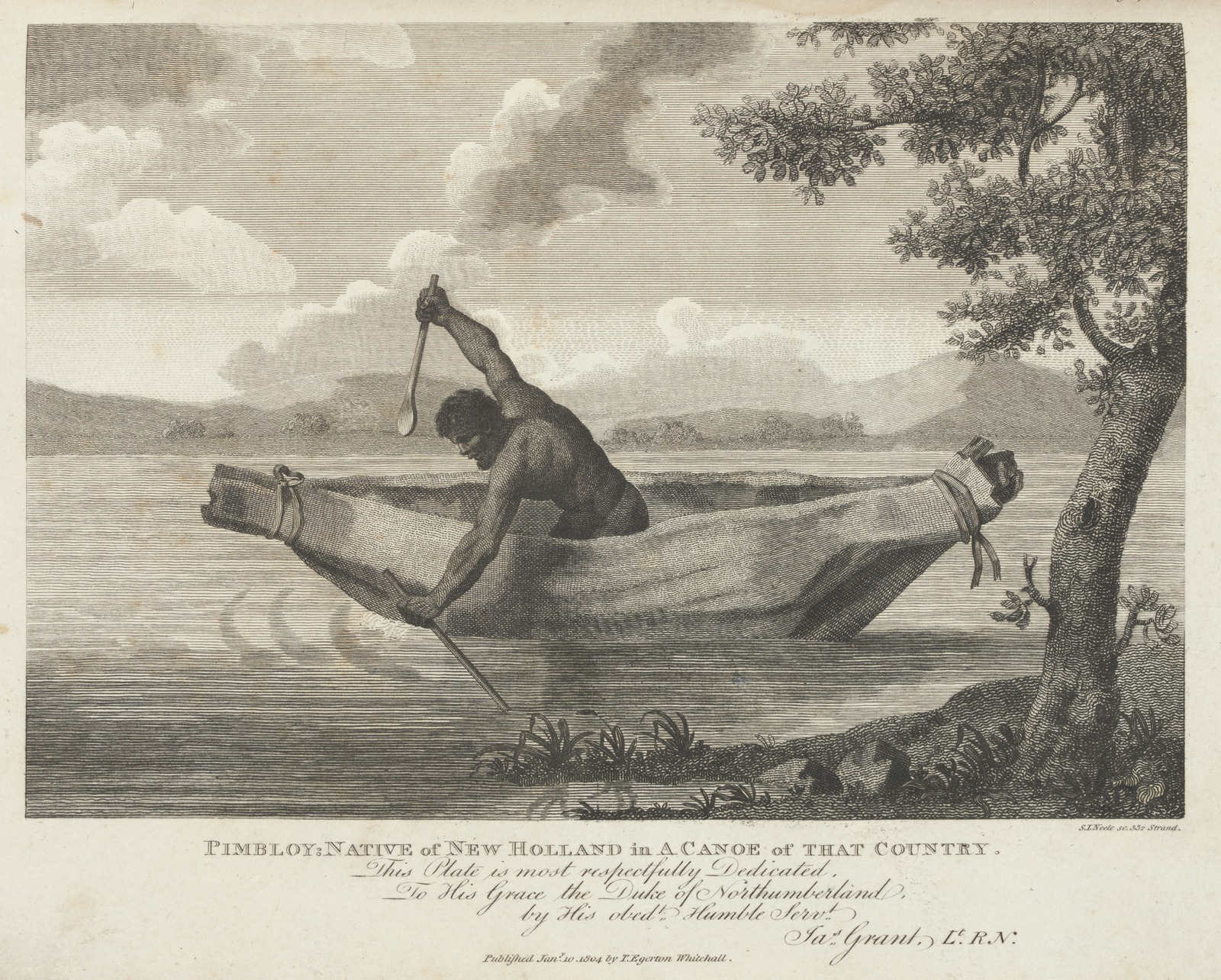Pemulwuy (1750?-1802) was an Australian Aboriginal warrior. During the 1790’s, he led the Aboriginal resistance to colonial settlement around Sydney, New South Wales. His campaign against the British lasted 12 years. It was one of the earliest instances of Aboriginal armed warfare against European settlers. 
Pemulwuy was born about 1750 near the Georges River in New South Wales. His birthplace was near the area later called Botany Bay. Pemulwuy was a member of the Bidjigal people, an Australian Aboriginal group that had long inhabited the land around Sydney. He was the leader of a Bidjigal group from Botany Bay. Injuries had left Pemulwuy with distinctive marks on his eye and foot. Other Aboriginal people believed these marks were a sign that Pemulwuy had supernatural powers.
The First Fleet, a group of ships that transported convicts from Britain (now the United Kingdom) to Australia, landed at Botany Bay in 1788. Arthur Phillip, the commander of the fleet and the newly appointed governor of New South Wales, established Sydney, the first permanent European settlement in Australia. Phillip initially formed some peaceful connections with Aboriginal groups in the area. However, the European settlers did not respect Aboriginal claims to the land.
Pemulwuy first became known to the British colonists in December 1790, when he killed the British convict John McIntyre. In revenge for McIntyre’s death, Phillip ordered a military raid to kill local Aboriginal people. But the British soldiers were unable to find Pemulwuy or any other Aboriginal people during this raid.
Beginning in 1792, Pemulwuy and his followers attacked several settlements around Sydney. Most of Pemulwuy’s raids were in response to British attacks on the Aboriginal population. Pemulwuy’s most notorious raid occurred in March 1797. He led about 100 Aboriginal warriors to attack a government farm in Toongabbie, a suburb of Sydney. The resulting conflict with the British became known as the Battle of Parramatta. Pemulwuy was seriously injured during the battle and was finally captured by the British. He was taken to a hospital, from which he managed to escape.
In 1801, the colonial government under Governor Philip King offered a reward for the killing or capture of Pemulwuy. King also signed an order permitting settlers to kill any Aboriginal people seen in the regions of Georges River, Parramatta, or Prospect. Pemulwuy was shot and killed in June 1802.
After Pemulwuy’s death, his head was removed from his body and sent to the English naturalist Joseph Banks. During Australia’s early colonial period, many British scientists collected the remains of dead Indigenous (native) people, including Aboriginal and Torres Strait Islander people. This practice violated the spiritual beliefs and burial customs of Australian Indigenous peoples. In 2010, Aboriginal leaders persuaded the British that they should return Pemulwuy’s skull to Australia. However, the British were unable to find the skull among historical materials.
